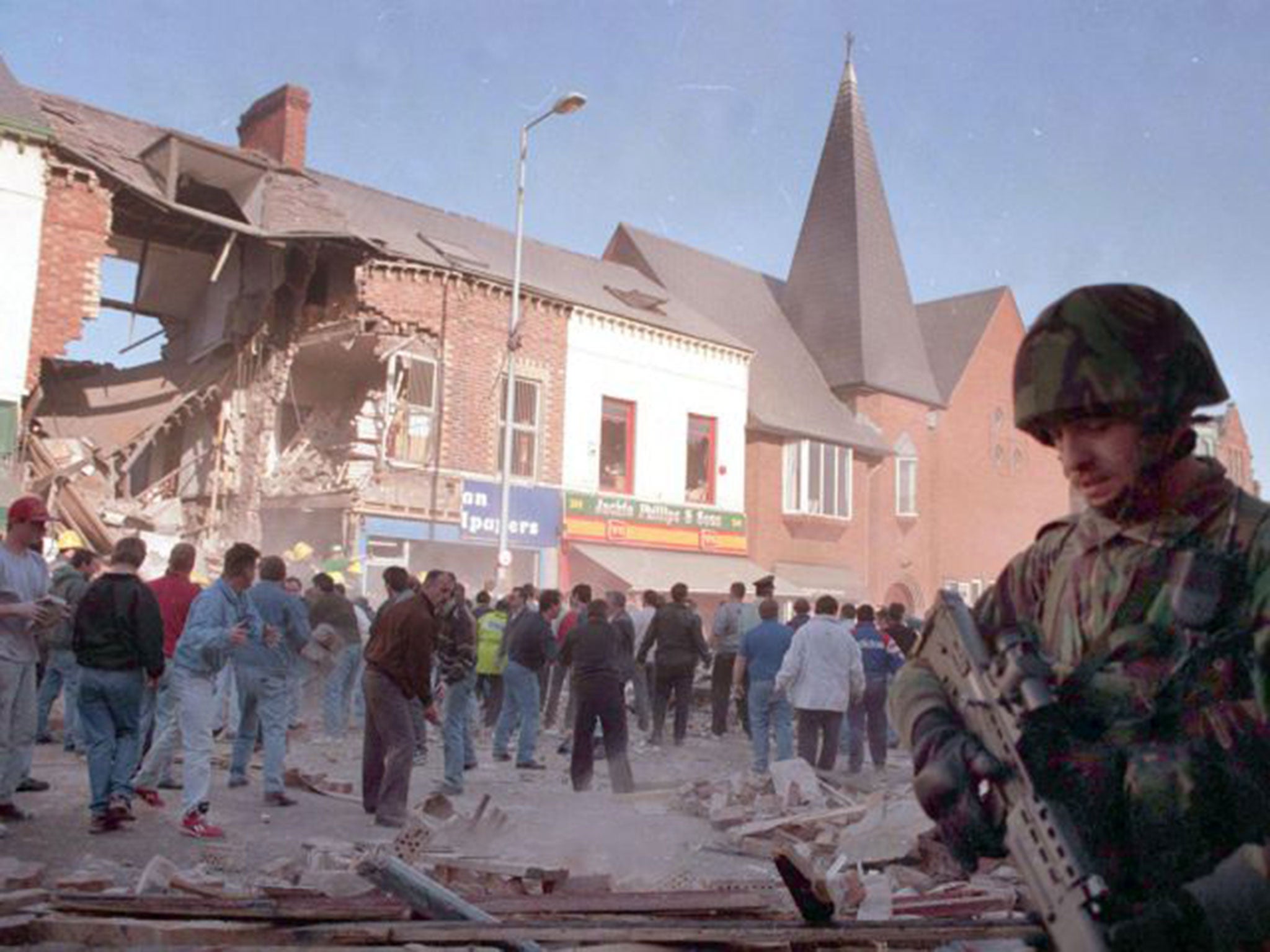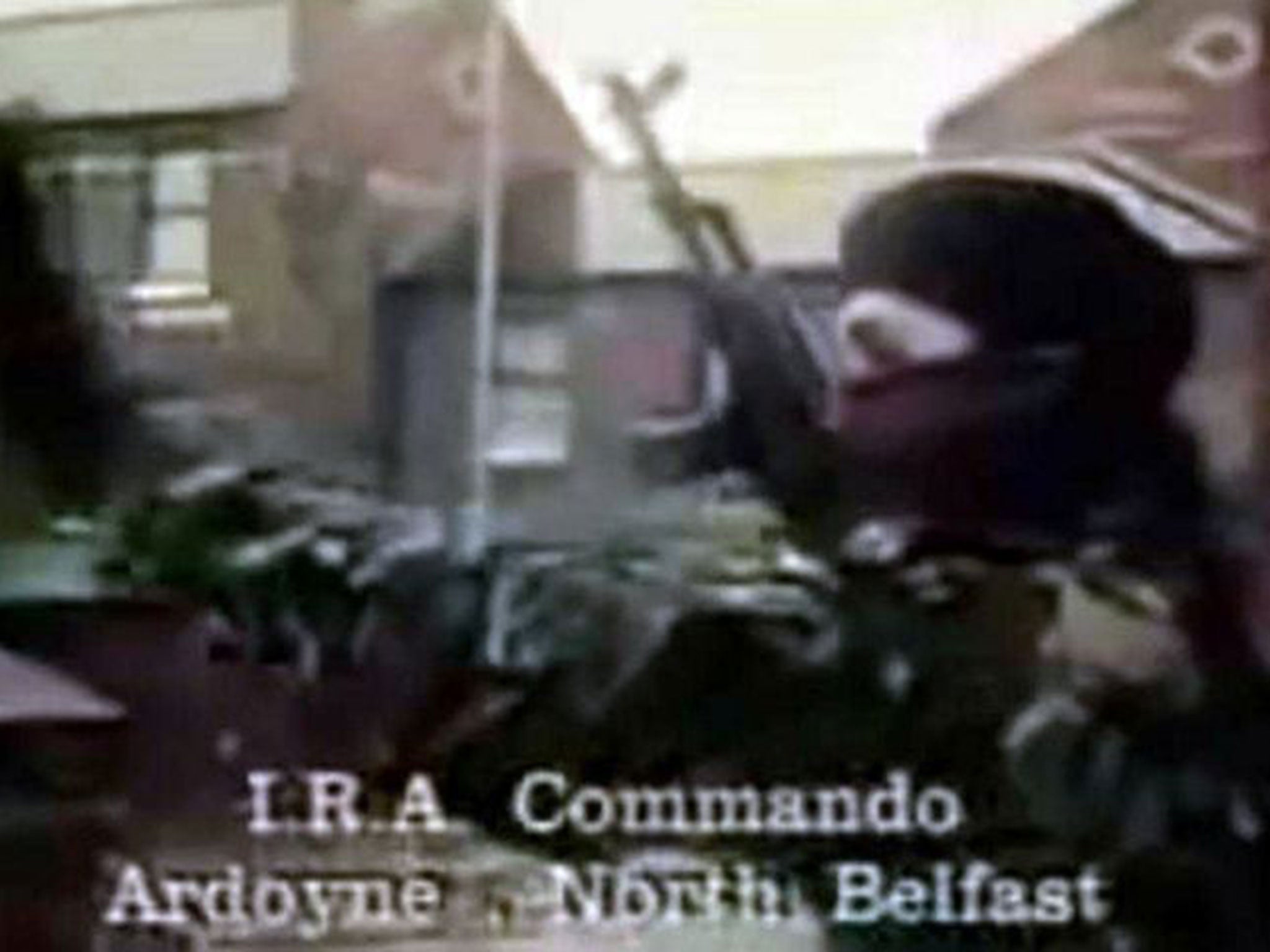Shankill Road bombing: MI5 failed to act on IRA tip-off that may have prevented Belfast atrocity, investigation claims
Highly-sensitive documents suggest terrorist who plotted attack that killed nine civilians in 1993 was British agent

Your support helps us to tell the story
From reproductive rights to climate change to Big Tech, The Independent is on the ground when the story is developing. Whether it's investigating the financials of Elon Musk's pro-Trump PAC or producing our latest documentary, 'The A Word', which shines a light on the American women fighting for reproductive rights, we know how important it is to parse out the facts from the messaging.
At such a critical moment in US history, we need reporters on the ground. Your donation allows us to keep sending journalists to speak to both sides of the story.
The Independent is trusted by Americans across the entire political spectrum. And unlike many other quality news outlets, we choose not to lock Americans out of our reporting and analysis with paywalls. We believe quality journalism should be available to everyone, paid for by those who can afford it.
Your support makes all the difference.The police watchdog in Northern Ireland is probing claims that the senior IRA operative who planned the 1993 Shankill Road bombing was an informant who passed on details that could have allowed the security forces to prevent the atrocity.
Nine civilians, including two children, were murdered in the attack on a fish shop in Belfast’s loyalist heartland 23 years ago which became one of the most notorious incidents of the Troubles and led to a wave of sectarian reprisal killings.
Highly-sensitive documents stolen by the IRA during a break-in at the fortified headquarters of the then Royal Ulster Constabulary (RUC) in 2002 have now been claimed to show that the terrorist who plotted the bombing was a British agent known as “AA”.
Leaks from the stolen papers suggest AA had extensively briefed his MI5 or Special Branch handlers on the aim and likely timing of the attack, which was designed to inflame sectarian tensions by killing the leadership of the loyalist Ulster Defence Association (UDA) terror group as they met above Frizzell’s fish shop on a busy Saturday in October 1993.
In the event, the UDA leaders escaped unharmed after rescheduling their meeting at short notice. The bomb, made with the powerful Semtex plastic explosive, instead killed Protestant shoppers and one of the bombers, IRA man Thomas Begley, as they carried it into the shop at lunchtime.
The extraordinary allegations concerning AA, first reported by the Belfast-based Irish News newspaper, raise the highly damaging prospect that British intelligence knew of the attack but failed to act quickly enough to prevent it; or even actively allowed a botched bombing of civilians to take place to place pressure on a faction of IRA still intent on pursuing violence and push its leaders towards accepting the peace process.

The Independent understands that AA, who was identified by the IRA from the Castlereagh papers in 2003 but escaped retribution from its notorious punishment squads and still lives in Belfast, may even have had custody of the bomb the night before the attack, allowing time for the device to be rigged to blow up his comrades.
The original plan had been to set a fuse just long enough for shoppers to be evacuated and for the bombers, disguised as delivery men, to escape. Instead, the device exploded as Begley reached the counter while surrounded by customers.
The Police Ombudsman for Northern Ireland has confirmed that it was formally assessing a complaint received last week from a relative of one of the victims of the bombing asking for AA and his relationship with either the RUC Special Branch or MI5 to be investigated.
In a statement on behalf of the ombudsman, Dr Michael Maguire, his office said: “We have received a complaint. It centres on two concerns: Did the RUC have information which would have allowed them to prevent the bombing and was the subsequent investigation compromised; [and] did the police ‘fail to deliver justice to the families of those who lost their lives in the bombing’?
“We will seek to establish if this is something we should investigate, and if so, when we could begin this work.”
The allegations add to an already heavy caseload for the watchdog concerning claimed collusion between the security forces and terror groups on both sides during the Northern Ireland conflict. They include the killings in the 1980s and 1990s of at least 20 alleged IRA informers whose relatives in some cases believe their loved ones were used as scapegoats to cover the tracks of the security forces’ most important IRA agents.
The burglary on St Patrick’s Day 2002 at the ultra-secure Castlereagh police headquarters was one of the most embarrassing and flagrant security breaches suffered by the RUC, since re-named the Police Service of Northern Ireland (PSNI).
The raid on the Special Branch offices netted files giving the codenames of British agents in Republican terror groups and records of information provided by them to their handlers. Millions of pounds was spent re-housing many of the informants and their handlers to ensure their security.
In order to reveal the true identities of the British agents, the IRA set up a special unit to pore over the informant messages and match them with the terror group’s own intelligence records. It took more than a year before the mole hunters were able to pinpoint “AA”, who was then “stood down” by the IRA’s ruling Army Council but allowed to remain living in the nationalist Ardoyne area of north Belfast.
Sources have disputed reports that AA, who is now in his mid-50s, had been the commanding officer of the IRA’s Ardoyne brigade and suggested he had in fact been its intelligence officer, in charge of plotting dozens of attacks, including the Shankill Road bombing.
The Castlereagh documents are understood to show that in early 1993 AA was passing back to his handlers details of the IRA plot to target senior UDA figures, including leader Johnny Adair, and the chosen location of the room above Frizzell’s fish shop as well as likely dates for the bombing.
Investigators will want to establish whether information from AA could have been passed to the UDA leadership to ensure their meeting was rescheduled on the day of the attack; and, crucially, whether there is any evidence that his handlers allowed the bombing to proceed to protect their source and ultimately strengthen the hand of those such as Sinn Fein leader Gerry Adams inching towards a cessation of the campaign of violence.
Relatives of the victims called for a full investigation. Charlie Butler, who lost three members of his family, said he and other families would be “devastated” if the allegations were proved to be correct.
He told BBC News: “Collusion is not a nice word for anyone but when it is collusion with innocent people losing their lives to protect someone else there has to be a line drawn to say that is wrong.
“[The security forces] were there to do a job, to protect people. If they knew about [the bombing] then they should pay.”
Join our commenting forum
Join thought-provoking conversations, follow other Independent readers and see their replies
Comments